First grass to see the light: ZEN in Japan
by Matt Whalen (VIMS, UC Davis graduate student)
I was excited to participate in the ZEN project because of the preliminary work I did for my Master’s research under Dr. Emmett Duffy at the Virginia Institute of Marine Science (VIMS) to test the methods in seagrass. I was also excited for the chance to get up close and personal with eelgrass (Zostera marina) in different parts of the world. I had visited eelgrass beds in Boston, Massachusetts, Bodega Bay, California, and Vancouver, Canada while visiting grad schools, and played around in tropical seagrasses in Florida while helping out with a seahorse research project a few years ago, but the bulk of my research experience in seagrass was focused on the lower Chesapeake Bay. When I found out that I would be traveling to Japan to work on not one but two of the ZEN experiments, I felt like a boyhood dream had come true. Sappy, but it’s 100% accurate. My father lived in Japan for a number of years while he was in the navy, and growing up I heard a lot of stories about his time there that romanticized the whole thing for me. He even promised me (around the time I started tying my own shoes) that we would travel to Japan together one day to climb Mt. Fuji.
The timing of the trip could not have been more perfect. At the conclusion of my Master’s degree at VIMS and before beginning my PhD at UC Davis. I spent a month and a half in the land of the rising sun. My time was split between Hiroshima Prefecture, Tokyo and surrounding areas, and the northern island of Hokkaido. No amount of Japanese anime (my favorite series being Cowboy Bebop and my most recently viewed film a Japanese rendition of the Little Mermaid named Ponyo) could have prepared me for how amazing this trip would be. My first impressions were actually in the airport and during the flight. I had scored direct flights from Washington, D.C. to Tokyo and I flew with ANA (All Nippon Airways)…“Nippon” and “Nihon” are Japanese (Nihongo) for Japan, and I’m not sure how “Japan” came into use. As is often the case (for me, anyway), international flights are far superior to domestic US flights, and ANA exceeded anything I had experienced before (I’ll let the better-traveled out there decide whether ANA or international flights generally are superior).
I made a quick list of why these international flights were awesome:
1) Perhaps the most impressive, I was not charged for my checked baggage. I had two large bags, but they weren’t brought up as an issue on any of my six flights… amazing.
2) The in-flight food was actually good. We had sembei (rice crackers) for snacks near the beginning of the flight, salmon and antipasto for dinner, and rice with bacon and mushrooms, yogurt, and melon for breakfast. And, perhaps not surprisingly, as much green tea as we could handle throughout the flight.
3) Everyone who worked for ANA was exceedingly polite and helpful. Nearly everyone spoke some En
glish (I was ashamed throughout my trip that I did not speak more Japanese) and helped me when I was lost or confused. When I landed in Tokyo, I took so long going through customs that our baggage claim period had already finished, but my bags were waiting for me on a luggage cart near customer service and were delivered without hassle.
4) I had my own television screen with my choice of tv shows, movies, video games, and audio. I was pleased to find the new Beastie Boys album (to which I rocked out thoroughly), I watched a National Geographic special on Japan natural wonders, and I watched a few Japanese variety shows, which I became very fond of during my stay. All in all, this was the best travel experience of my life. But before this becomes a personal diary or a diatribe on airline policies or American culture, back to research.
When I arrived in Hiroshima on 27 June 2011 it was dark but humid and warm. Four ZEN participants were waiting to pick me up: our fearless leader Dr. Masakazu Hori (Hori-san) of the National Research Institute of Fisheries and Environment of Inland Sea, his postdoc Dr. Hiromori Shimabukuro (Shima-san or Bukuro-san for short), PhD student Takehisa Yamakita, and Dr. Massa Nakaoka’s Master’s student Kyosuke Momota from Hokkaido University. They greeted me enthusiastically and we set off for the marine lab near Takehara City on the Seto Inland Sea. The next morning I awoke to find that I had an amazing view of the Seto Inland Sea from my dormitory room. I could see a multitude of small islands (the Seto Inland Sea has thousands), ferries shuttling people and cars between the islands and the mainland, and fishing boats that had both outboard motors and a small gaff sail to allow the boats to turn on a yen when fishing.
On my first full day in Japan (day 2), we visited the Southern Japan ZEN field site to give me a chance to see the system and to collect samples for stable isotope analysis, which allows us to determine what the different animals in the system are eating by measuring the carbon and nitrogen content of their tissues. We traveled to the site on a very nice research vessel that is stored out of water due to the extreme tidal range found in the Seto Inland Sea (~ four meters or 13 feet) and has to be lowered into the water for each use. The site was about five minutes from the marine lab and located in a bay formed by a small island, which featured a large and dense bed of eelgrass along with a fringe of a congener, Zostera japonica, in the shallows and small patches of a more distantly related seagrass, Halophila ovalis, in deeper areas.
This eelgrass bed was the most impressive I had ever seen. Much of it is completely submerged at low tide. The water was fairly warm and clear that day, so I spent a long time snorkeling around and got some great views. The blades of the eelgrass were the tallest I had ever seen, measuring in at over 1.5 meters (that’s around 5 feet!). That may not sound like much to someone used to bamboo or even giant kelp, but to someone used to seeing eelgrass that was on the order of a few tens of centimeters this was phenomenal. In the small amount of time I had been in Japan I had already begun to feel ungainly and too tall, but in this bed of eelgrass I felt small (although still ungainly).
If that wasn’t enough, Hori-san then took me to the largest continuous eelgrass bed in the Seto Inland Sea. Researchers (often those from Australia) sometimes refer to seagrass beds as meadows. I wondered why this was the case. I assumed it was just a terminological preference or a holdover from seminal research articles from different locations. To me a meadow implies something much larger than a bed. Here in the Seto Inland Sea, I could now understand the amount of space that a seagrass bed (ahem, meadow) is able to cover. We did not stay long, but we cruised with the boat on plane over a large extent and all I could see was dense seagrass flying past. I wish I had brought my fishing pole.
On the next day we broke down the experiment (day 3, I showed up just in time), collecting the final samples for mesograzers, epiphytic algae, and eelgrass growth. We were out for many hours and a few of us began to complain of a stinging sensation. Apparently, there are lots of small jellyfish that inhabit the seagrass beds in this part of Japan, and they are small enough to get into your wetsuit through the neck if you are doing a lot of marine research. We were all stung many times. Each sting is no big deal, but the constant exposure becomes irritating and after a while I began to feel ill. My stomach started to cramp and my hips and lower back started to ache. I thought perhaps the bento box I had for lunch was not so fresh or my wetsuit was too tight (I had taken this wetsuit out into the field for three years in a row at this point so that seemed unlikely) or that I had gotten too much sun. We made it back to the lab and at this point I only wanted to lie down. Unfortunately, we had a huge mass of samples to offload and organize.
On a lighter note, there was a barbeque party waiting for us (organized by Dr. Jun Shoji and in honor of Kyosuke Momota, the “ace of the seagrass bed”) after our work was finished. It was a most gracious offering complete with signs for Momota-san, another student’s birthday, and one welcoming me! We ate well and enjoyed each other’s company as the sun set, but the beer didn’t seem to be helping what ailed me. I was still achy the next morning, but we had more field work to finish.
I forgot about the pain, which wasn’t that bad – just annoyingly constant, because the work was so much fun. We used a beach seine to sample small predators in the seagrass bed near the site of the experiment and we collected many cool critters including juvenile rockfish (Sebastes spp.) and juvenile pufferfish (the smallest one shown in the picture to the left). I also got a chance to speak with our research vessel’s captain, Iwasaki-san, about life in the area. I found out that he loved to go surfing, had been to Hawaii, and that he was married to a Basque woman. Amazing what you can find out about people even if you don’t speak the same first language. Later that day, we had to leave the Takehara Marine Station for Hatsukaichi City, where Hori-san’s lab was located and where we would finish processing samples for the southern Japan ZEN experiment. I was sad to leave this beautiful place with its perfectly set marine station and historical downtown (Takehara City), but I was excited to move on and see what more this country had in store. The trip took about two hours by car, but was only about 40 miles as the crow flies. By the time we got there, my pain had subsided and I talked to others that felt the same achiness after that long field day, and we chalked it up to the jellies.
In Hatsukaichi, I stayed in a very nice dormitory with Momota-san and a new companion, an honors undergraduate student Dr. Massa Nakaoka named Shotaro Aoe (pronounced “ah-way”). By day, we worked hard processing a large number of samples from the experiment, but by night we visited new places, including many delicious (oishi!) noodle shops, a local hot spring, downtown Hiroshima, and historic places from the samurai period. We also made a lot of food at the dorm (including shabu shabu and sukiyaki… Momota-san and Aoe-san can take all of the credit) and watched our fair share of Japanese variety shows. On the weekends, Hori-san was gracious enough to take me around, including to the famous Miyajima Island, and even invited me to his home for dinner (he made his soul food “Takoyaki” – Google it and, better yet, try it!). I became very comfortable at the dorm and the surrounding area and even set off on my own with a bike lent to me by none other than Hori-san. But, this also ended far too soon. I was off to Tokyo to meet my father, see the city, and head off to the mountain I dreamt about as a child before exploring the eelgrass meadows up north in Hokkaido.
Stay tuned for Part 2…
Photos by Matt Whalen and the Southen Japan team.

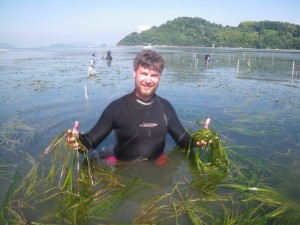
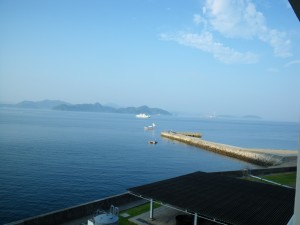
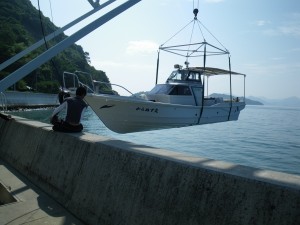
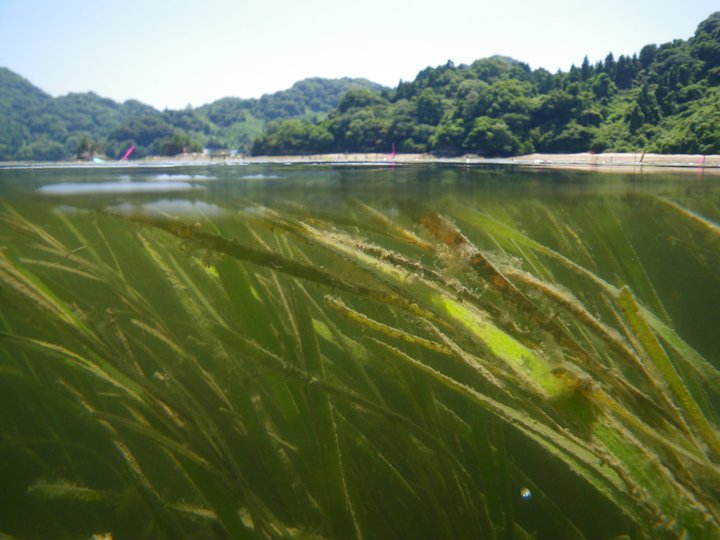
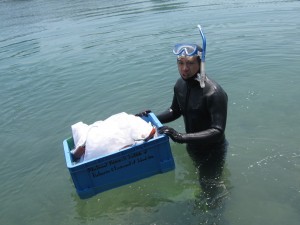
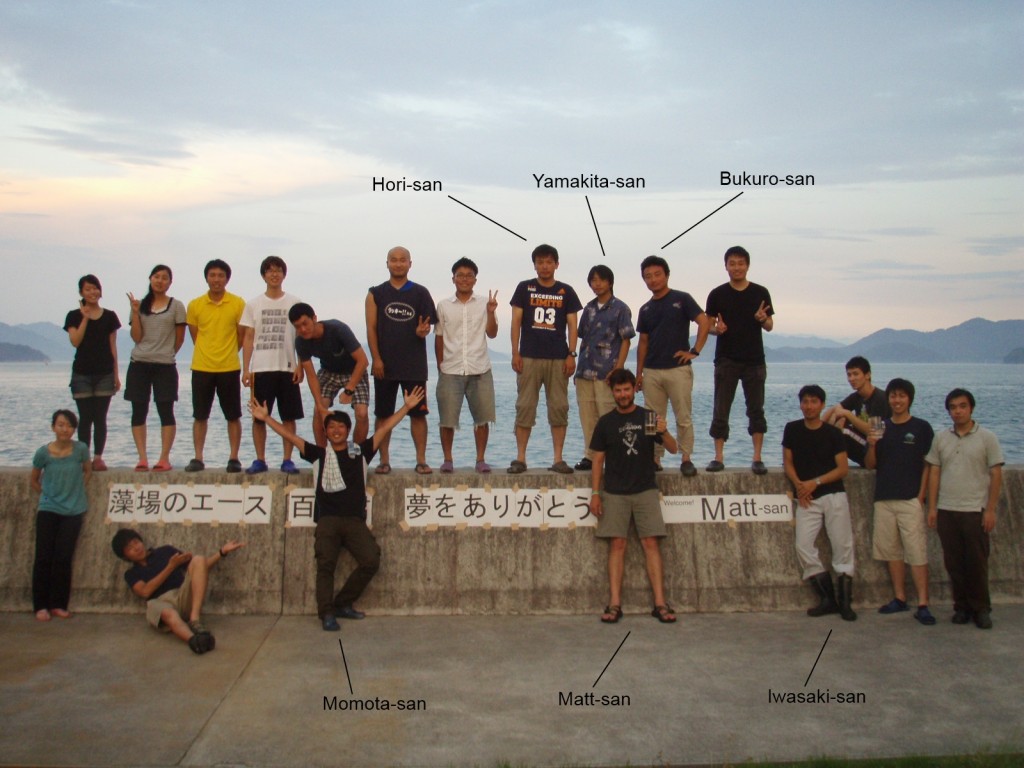
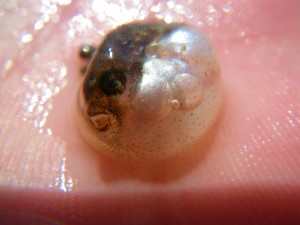
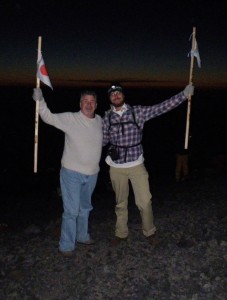

Comments are closed.